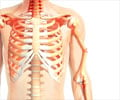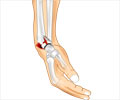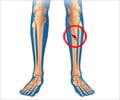The commonly used Fracture Risk Assessment Tool (FRAX) is not useful for shared clinical decision-making regarding osteoporosis screening in younger postmenopausal women.

Comparing Osteoporosis Fracture Prediction Tools Among Younger Postmenopausal Women
Hence, researchers sought to compare the ability of FRAX and OST to predict fracture risk in postmenopausal women aged 50 to 64 years in each of four racial/ethnic categories: Asian, Black, Latino, and White. The study findings were published in Jama Internal Medicine.‘Easy to use Osteoporosis Self-Assessment Tool (OST) performs better than Fracture Risk Assessment Tool (FRAX) in younger postmenopausal women.’





Both tools are among those recommended by the U.S. Preventive Services Task Force to identify women within the younger age group who should undergo bone mineral density testing. The FRAX calculator (1✔ ✔Trusted SourceOsteoporosis Screening and Fracture Risk Assessment Tool: Its Scope and Role in General Clinical Practice
Go to source) requires the user to select one of those four racial/ethnic categories, but their inclusion in clinical risk prediction tools is controversial and the subject of much debate.
Between May and August 2022, they examined 10 years of follow-up data from nearly 67,200 younger postmenopausal participants in the Women’s Health Initiative for major osteoporotic fractures of the hip, spine, forearm, and shoulder. Of those women, nearly 5,600 experienced a fracture. The researchers assessed a subset of 4,600 participants for bone mineral density.
The U.S. version of FRAX, which requires race/ethnicity information, should not be routinely used to make screening decisions in younger postmenopausal women, the researchers write. Neither OST nor FRAX identified women who had a fracture during the subsequent 10 years (2✔ ✔Trusted Source
Race and Ethnicity and Fracture Prediction Among Younger Postmenopausal Women in the Women’s Health Initiative Study
Go to source).
But OST is an excellent tool for identifying women with osteoporosis-level bone mineral density, which puts them at risk for fractures, while FRAX is not.
Identifying women with osteoporosis by bone density is the goal of screening because those women are potential candidates for osteoporosis drug therapy. For that purpose, OST performs better than FRAX, is simpler to use, and does not require the inclusion of race or ethnicity information.
Advertisement
- Osteoporosis Screening and Fracture Risk Assessment Tool: Its Scope and Role in General Clinical Practice - (https://pubmed.ncbi.nlm.nih.gov/35928393/ )
- Race and Ethnicity and Fracture Prediction Among Younger Postmenopausal Women in the Women’s Health Initiative Study - (https://jamanetwork.com/journals/jamainternalmedicine/article-abstract/2804684 )
Source-Eurekalert















